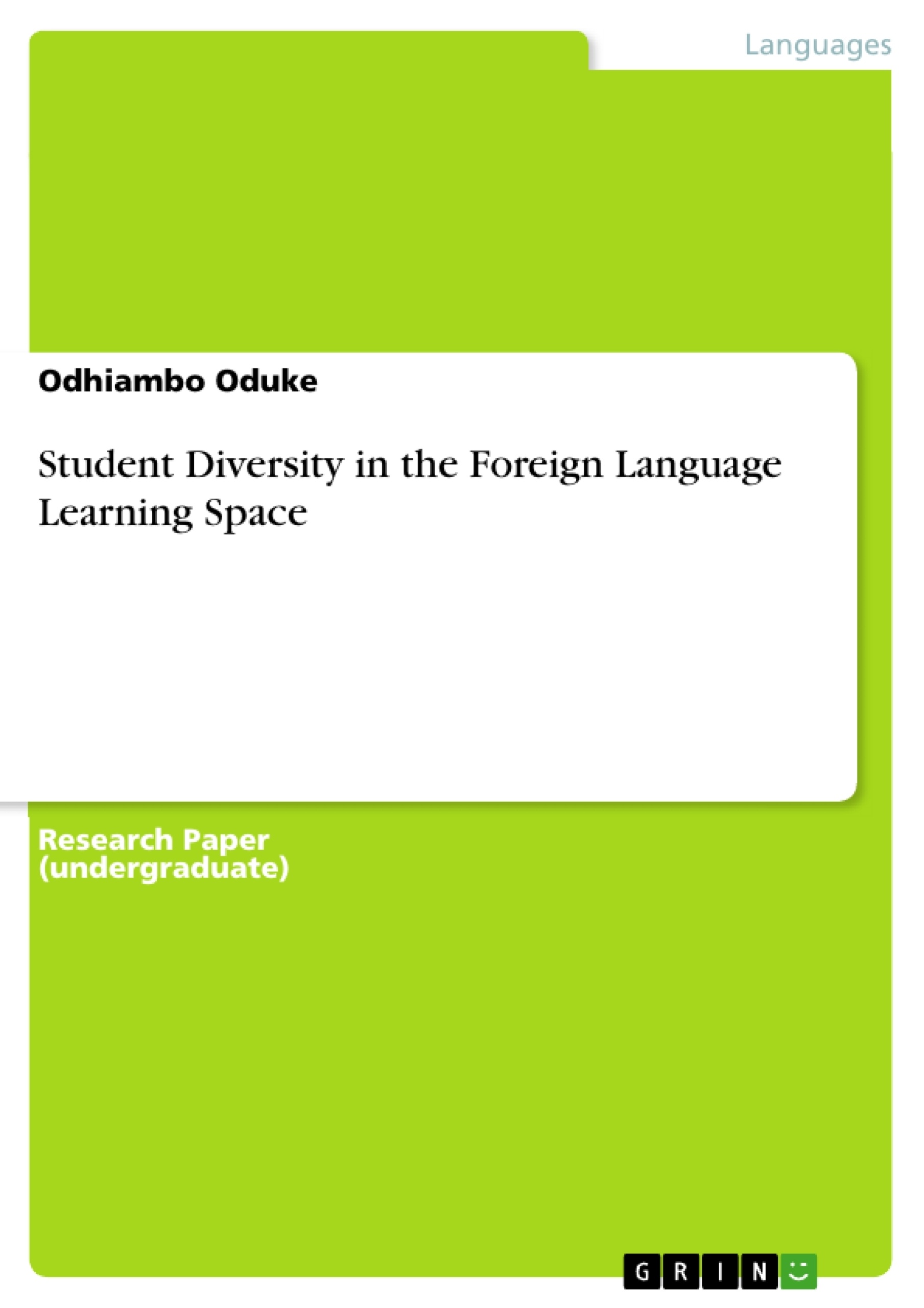This paper highlights the various facets of diversity in the
actual language learning space or environment. The
challenges which the teachers and students encounter as
they strive to acquire the linguistic skills are also discussed.
Inhaltsverzeichnis (Table of Contents)
- INTRODUCTION
- PERTINENT OBSERVATION
- AGE AND DIVERSITY IN LEARNING
- HETEROGENEITY AND DIVERSITY
- THE COUNCIL OF EUROPE AND DIVERSITY
- COGNATES AND FOREIGN LANGUAGE LEARNING
- DIVERSITY AND LANGUAGE LEARNING
- MICRO- ANALYSIS OF DIVERSIFIED LEARNING
- BLOOM'S TAXONOMY AND DIVERSITY IN LEARNING
- STRATEGIES FOR STUDENTS WITH DIVERSE TALENTS AND CHALLENGES
- DIVERSITY AND THE CURRENT CHANGING TRENDS WHICH HAS AFFECTED LEARNING IN GENERAL
Zielsetzung und Themenschwerpunkte (Objectives and Key Themes)
This paper aims to explore the multifaceted nature of diversity within the context of foreign language learning. It examines the challenges encountered by both teachers and students in acquiring linguistic skills and discusses various strategies for addressing these challenges.
- The impact of age and individual learning styles on language acquisition.
- The importance of acknowledging and integrating student heterogeneity and diversity in the learning process.
- The role of cultural factors and language learning strategies in developing fluency and proficiency.
- The application of Bloom's Taxonomy and other pedagogical frameworks to support diverse learners.
- The influence of changing trends in education on language learning practices.
Zusammenfassung der Kapitel (Chapter Summaries)
The introduction explores the inherent diversity in language learning, highlighting how the acquisition of both spoken and written language skills varies among learners. It emphasizes the crucial role of communication in human interaction.
The "Pertinent Observation" chapter examines research findings that suggest significant differences in language acquisition among students, especially in regards to age and the time it takes to develop cognitive skills in a foreign language.
The chapter on "Age and Diversity in Learning" focuses on the Kenyan context, where learners are introduced to French at the secondary level. It acknowledges the challenges faced by most students in attaining fluency and discusses the impact of starting language learning at a younger age.
The "Heterogeneity and Diversity" chapter explores two distinct perspectives on student differences: heterogeneity, which emphasizes the need for adaptation, and diversity per se, which views differences as valuable resources. The author advocates for embracing diversity as a key element in language learning.
The subsequent chapters delve into various aspects of diversity in language learning, including the Council of Europe's initiatives, the role of cognates, and the micro-analysis of diversified learning strategies.
The chapter on Bloom's Taxonomy examines the application of this framework in accommodating diverse learners. The final chapter explores strategies for addressing the unique challenges faced by students with diverse talents and the impact of changing trends in education on language learning.
Schlüsselwörter (Keywords)
The key terms and concepts explored in this paper include diversity, language learning, foreign language acquisition, age, individual differences, heterogeneity, cultural factors, learning strategies, Bloom's Taxonomy, and changing trends in education. The paper emphasizes the importance of embracing diversity as a valuable resource in fostering effective and inclusive language learning environments.
- Quote paper
- Odhiambo Oduke (Author), 2013, Student Diversity in the Foreign Language Learning Space, Munich, GRIN Verlag, https://www.grin.com/document/232756



